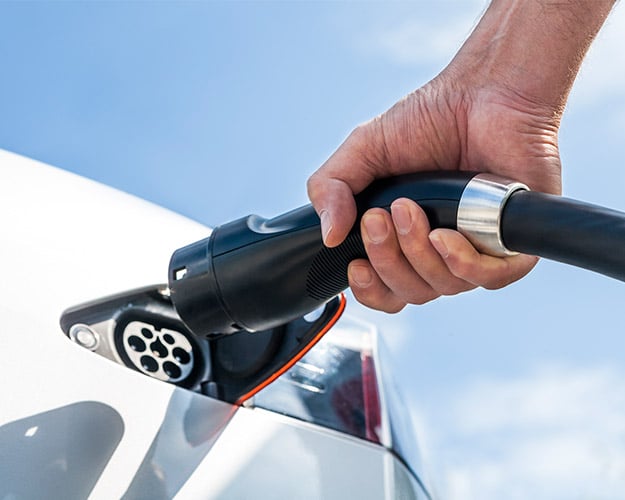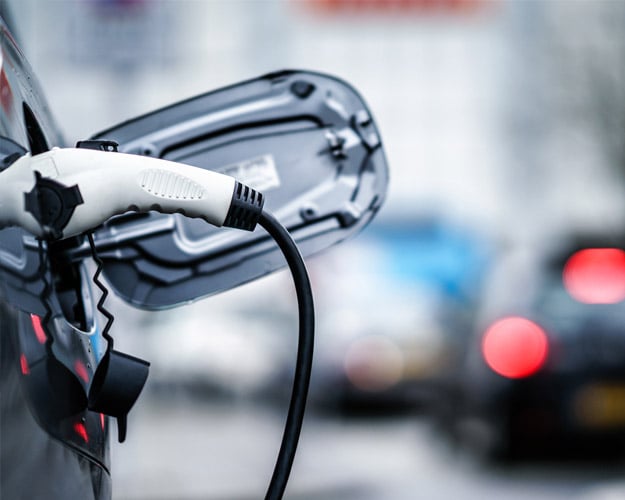Key Takeaways
- The Inflation Reduction Act provides a federal tax incentive for individual taxpayers purchasing certain pre-owned clean vehicles.
- Beginning in 2023, taxpayers may claim a credit on purchases of qualifying used electric vehicles (EV) or fuel cell vehicles (FCV).
- Direct transfer is available at qualifying dealerships beginning January 1, 2024.
The Inflation Reduction Act of 2022 provides a new federal tax incentive for individuals purchasing energy efficient and certain pre-owned clean vehicles beginning January 1, 2023.
- What is the impact of the clean vehicle credit on dealerships? We broke down what dealers need to know here.
Credit for Vehicles Purchased in 2023 and 2024
Beginning in 2023, taxpayers may claim a credit on purchases of used electric vehicles (EV) or fuel cell vehicles (FCV). While the credit for pre-owned vehicles is similar to the credit for new vehicles, there are a number of differences, including:
- The amount of the credit
- North America final assembly is not a requirement
- Critical mineral and battery component requirements are not applicable
- The used vehicle credit has lower taxpayer income thresholds
To help taxpayers determine eligibility, the IRS released Frequently Asked Questions (FAQs) to clarify key revisions under the IRA. Below is a summary of some of the terms and key credit criteria (be sure to review the full FAQ document for complete information).
Like the new vehicle credit, manufacturers must certify specific vehicles meet applicable credit criteria and dealers must provide buyers with a seller’s report. As a resource, the IRS maintains a list of qualifying used vehicles.
Vehicle Requirements:
- The credit amount is the lesser of $4,000 or 30% of the sales price.
- The vehicle’s sales prices must be $25,000 or less.
- Used electric vehicles (EV) must meet the following requirements:
- Manufactured by a qualified manufacturer.
- Gross vehicle weight rating of less than 14,000 pounds.
- Powered to a significant extent by an electric motor with a battery capacity of seven kilowatt hours or more.
- The battery is capable of being recharged from an external source of electricity.
- Used fuel cell vehicles (FCV) must have a vehicle weight rating of less than 14,000 pounds.
- The vehicle’s model year must be at least two years earlier than the current calendar year.
Credit Eligibility Requirements:
- Only individual taxpayers are eligible to claim the credit.
- To be eligible, taxpayers must fall under specific income limitations for the current or preceding tax year. The modified AGI thresholds:
- Married filing jointly or filing as a qualifying surviving spouse or a qualifying widow(er) - $150,000
- Head of household - $112,500
- All other taxpayers - $75,000
- The vehicle’s first transfer of ownership qualifies for the credit, meaning only the vehicle’s second owner is eligible to claim the credit.
- The taxpayer may only claim the credit once every three years.
- Vehicles must be purchased from a licensed dealer.
Direct Transfer:
Beginning on January 1, 2024, a new provision allows taxpayers to directly transfer the credit to qualified dealerships. While the credit may still be claimed by filing Form 8936, Qualified Plug-in Electric Drive Motor Vehicle Credit, eligible taxpayers may immediately receive the credit by participating in the IRS’s direct transfer program.
With taxpayer authorization, registered dealerships may apply for payment directly from the IRS when electronically submitting the seller report. If eligible, this allows the taxpayer to benefit from the financial incentive at the time of purchase, instead of waiting to file their tax return. Although taxpayers must repay the credit if income limitations are surpassed on their tax return, credit recapture is not necessary if the credit exceeds their regular tax liability.
What are the differences between the Pre-Owned and New Clean Vehicle Credits?
Both credits have sales price and taxpayer income limitations although the thresholds for pre-owned clean vehicles are lower. Unlike the new vehicle credit, the credit for pre-owned vehicles does not have manufacturing or component requirements; however, it does restrict the purchaser and where a qualifying vehicle can be purchased.
What are the next steps for the Pre-Owned Clean Vehicle Credit?
Beginning in 2023 taxpayers purchasing a used clean vehicle may claim the nonrefundable Pre-Owned Clean Vehicle Credit. Like the credit for new clean vehicles, a transfer program allowing taxpayers to directly transfer the clean vehicle credit to the dealership commenced on January 1, 2024. When considering the purchase of a new or previously owned electric vehicle it is also important to consider the variety of state incentives that may be available.
What to know about changes to the federal income tax credits available for vehicles.
 Read the Article
Read the ArticleBusiness Credits & Incentives
Dealerships
Who We Are
Eide Bailly is a CPA and business advisory firm helping our clients grow, thrive, and embrace opportunities and innovation.


